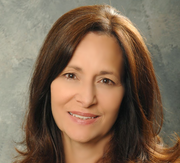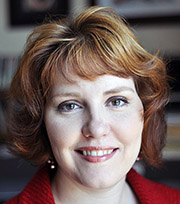Every alum has a favorite course they took while at Illinois State – that one professor who spun them off into their career, that one research project that changed everything.
There are more than 20 courses being offered for the first time at Illinois State this fall, from Stage Lighting Software to Introduction to School Librarianship. It’s often a professor with a passion for a subject that leads to course creation, so here’s a look at the origins of three new classes for Fall 2012:
Business Ethics, Social Responsibility and Sustainability
Department of Marketing, College of Business
Aside from whether to shave a few minutes from the time clock or steal some Post-Its, a lot of business students think they won’t face deeply complicated ethical situations at the start of their careers.
They tend to think that the workplace-ethics failings of Enron or Penn State are mistakes made by those only above their pay grade, said Associate Professor Jeri Beggs.
“The problem is, some of these ethical dilemmas started at the bottom, or are carried out at the bottom,” Beggs said. “They need to understand they are going to be faced with ethical dilemmas.”
Beggs has always wanted to teach a course on ethics, and she’s teaching two sections (about 42 students combined) this fall for the first time. She got the chance, in part, because the Department of Finance, Insurance and Law is looking to start a Sustainability minor and needed a course like this, and because the Department of Accounting’s future Certified Public Accountants now need a three-hour ethics course under their belts.
In addition to studying the philosophical side of ethics – from Immanuel Kant’s categorical imperative to utilitarianism — each student will spend the entire semester tracking a single company’s approach to ethics, sustainability and social responsibility, Beggs said. Students will also begin and end the semester by taking a moral reasoning test that will track their growth, Beggs added.
It’s the second time Beggs has created a course from scratch. The experience is very different than teaching a course where a single 15-chapter textbook can provide all relevant materials.
“It’s a lot more work,” Beggs said.
Criminalizing the Mentally Ill
Department of Criminal Justice Sciences, College of Applied Science and Technology
There are 33 students in Professor Cara Rabe-Hemp‘s new course, Criminalizing the Mentally Ill, and they come from myriad majors – criminal justice, music therapy, social work, nursing and psychology.
That’s important, because one of the biggest issues facing the criminal justice system today is that it’s become the de facto mental health care system in the U.S., Rabe-Hemp said. And one obstacle to fixing the problem is that those in criminal justice occupations don’t always work together with those in the “helping” professions, such as social work, she said.
“Any chance you have to get those diverse populations together and talk about some of these problems, that’s good, because at the end of the day, they have the same clientele,” Rabe-Hemp said.
Using a combination of class discussion and hands-on projects, students will tackle big questions about what historical events led the criminal justice system to its current point, and what innovations, such as specialty mental health courts, have the potential to deal with the crisis.
Rabe-Hemp called teaching a first-time course she helped create a privilege.
“The buy-in from the students’ perspective to a course unique like this is different than a traditional course,” she said. “They bring with them a higher level of interest in this specific area.”
Acting Styles: Discovery and Performance, Viewpoints and Composition
School of Theatre and Dance, College of Fine Arts
Like a scientist breaking down a substance into its most basic elements, Assistant Professor Sonja Moser‘s acting students will dive into the core pieces of performance to better harness them later.
The so-called Viewpoints approach is the latest addition to Theatre’s acting styles curriculum. Viewpoints is an acting vocabulary, built on physical exercises, formalized and popularized by director Anne Bogart and her New York-based SITI Company. Its nine pieces are broken into time or space, such as tempo, gesture, and repetition.
“These are all tools that the actor has to enhance storytelling. They can make choices about all of them,” said Moser. “How quickly a character speaks – that’s tempo.”
Moser’s course is capped at 12 students. The third-year faculty member previously taught the Viewpoints method to some graduate student directors in spring 2011, but this is the first formal course for undergraduate actors.
“The exercises are constructed to draw the actor’s awareness to each of these individual Viewpoints so that they can make bolder or more interesting choices during performance,” Moser said.
Ryan Denham can be reached at rmdenha@ilstu.edu.



